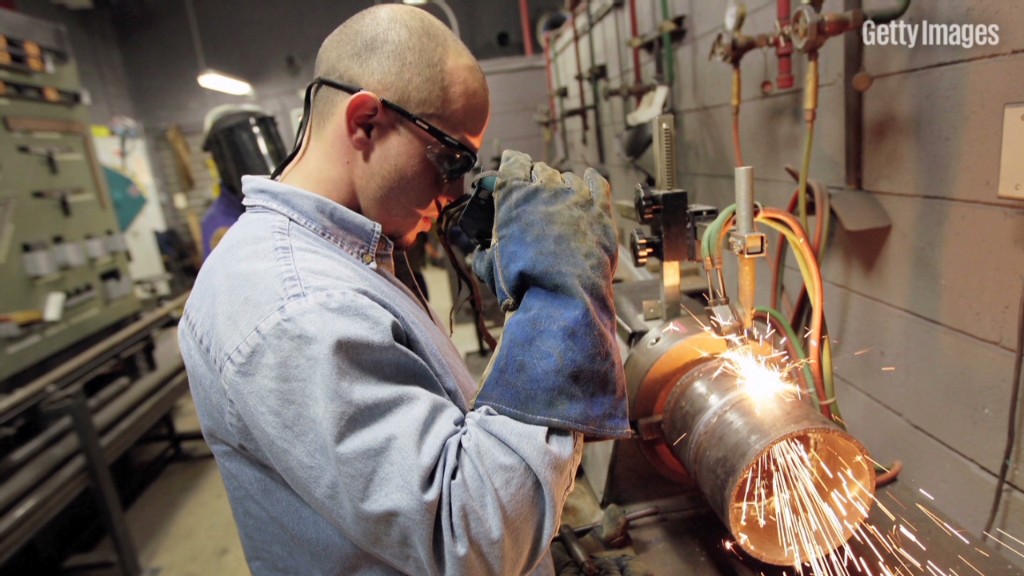
The job market is not exactly smokin' hot, but it's an improvement over recent years.
Let's zoom out a bit. Here are five important trends in the labor market that you should be thinking about beyond the monthly unemployment figure:
1) More people are on payroll today than any other time in U.S. history
Yes, we lost a lot of jobs during the recession, but we've gained those jobs back. Now there are 139 million people on payroll in the U.S.
The catch? A big driver of that record is simply population growth. There are still over 9 million people unemployed -- people who are looking for work, but can't find a job. That's down from over 15 million in 2009, but the labor market isn't back to full health yet.
2) About a third of the workforce is freelance
This is a hard one to measure. The most recent government data available comes from a 2006 Government Accountability Office report which concluded that about 31% of the workforce was 'contingent', meaning they aren't in permanent or full-time jobs. But both the recession and technological advances have changed that dynamic.
A recent survey commissioned by the Freelancers Union and Elance-oDesk says that 53 million freelancers (including independent contractors, temporary workers and moonlighters) make up 34% of the U.S. workforce.
And the number is expected to grow. Workers under 35 are more likely to freelance and an Intuit study predicts that 'contingent workers will exceed 40 percent of the workforce by 2020.'
Related Video: Freelancer health care off Obamacare grid
3) About 5 million 16-24 year olds aren't working or in school
That's one in seven young people, according to a Social Science Research Council report from late last year. There's even a term for them -- disconnected youth -- and the rate in certain neighborhoods can reach as high as 30%. Unsurprisingly, there are racial correlations to these statistics. For example, about one in four black and latino youth in Philadelphia are not in school or working.
The Brookings Institute has looked at this issue as well, saying the labor market fortunes of youth have "plummeted."
The good news? We're moving in the right direction. The Bureau of Labor Statistics said the July unemployment rate for 16-to-24 year-olds was the lowest since the recession started, at 13.6%.
Related Story: More teens are hearing 'You're hired!'
4) Women make only 82% of what men make
Unfortunately, it's probably not a surprise that women are making less than their male counterparts. It's not simply that women work less or that they are in lower paying jobs. Full-time female workers make less than men in 101 of 112 occupations, according to a report by the Institute for Women's Policy Research.
The gap is wider in many higher paying jobs including Financial managers (70%), Software developers (79%) and CEO's (80%).
5) Baby Boomers are retiring at a rate of 10,000 a day
More than 70 million Baby Boomers will retire before 2030, according to the Social Security Administration. Retirees contribute less to the economy than people who work. But Georgetown University says their absence in the workforce will help create upwards of 30 million job openings by 2020.
And retirees spend more money on certain things, like health care. That also creates job opportunities. Personal care aides and home health aides are two of the fastest growing jobs in America.
Related Video: I worked in finance. Now I'm a nurse
The U.S. Bureau of Labor Statistics predicts those occupations will grow almost 50% by 2022. The wages are low, but that's more than 1 million new jobs.


